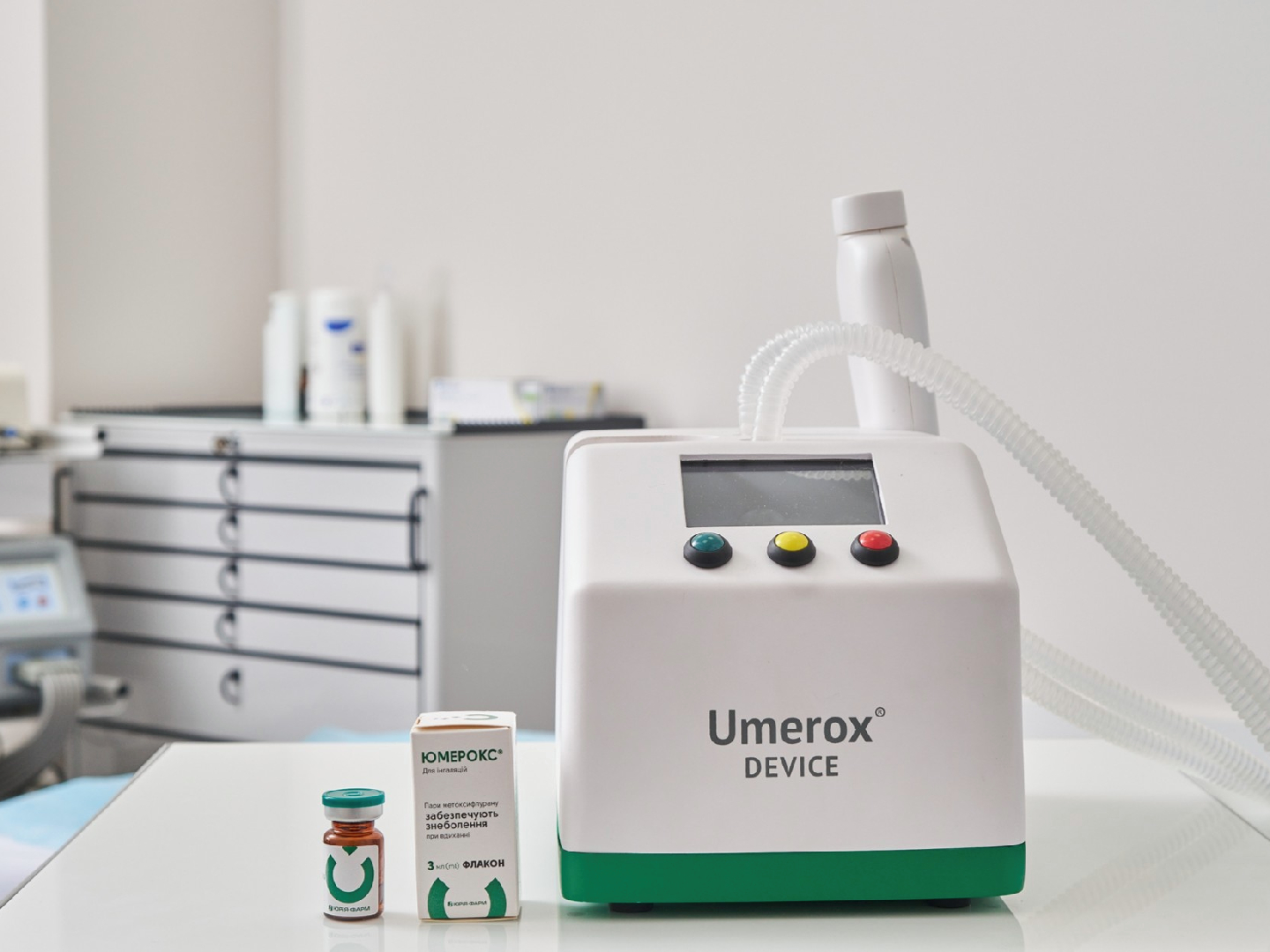The modern aspects of the optimal therapeutic strategy of hyperemesis gravidarum

Although nausea and vomiting in early pregnancy is very common, affecting approximately 80% of pregnancies, hyperemesis gravidarum (HG) is a severe form that complicates up to 2.2% of pregnancies. HG is one of the most common indications for hospitalization during pregnancy. In addition to the consequences of undernutrition for the mother and fetus, the severity of HG symptoms causes a serious psychosocial burden, leading to depression, anxiety and even the development of perinatal pathology. The aim of this meta-analysis was to examine all randomized controlled trials of interventions specifically for HG and evaluate them based on both subjective and objective measures of efficacy, maternal and fetal/neonatal safety, and economic costs.
A systematic data search was conducted using the databases MEDLINE, ISI Web of Science, PubMed, Scopus, Google Scholar, Cochrane Database of Systematic Reviews and publications in professional publications of Ukraine for 2013–2023. The search was conducted using the terms: pregnancy, nausea and vomiting of pregnant women, hyperemesis, antiemetic therapy during pregnancy, infusion therapy and the safety profile of medications prescribed during pregnancy in various combinations.
The primary outcome was the effectiveness of therapeutic strategies in reducing or stopping nausea/vomiting; breakdown by safety profile of antiemetic drugs; optimization of infusion therapy; additional clinical strategies that help improve the quality of care for pregnant women; adverse effects and side effects of drugs used to treat LBW for the mother/fetus/neonate.
The results presented in our meta-analysis can be used in the creation of a national clinical guideline, protocol, consensus or clinical recommendations regarding the clinical management of hyperemesis gravidarum.
Key words: pregnancy, early toxicosis, hyperemesis gravidarum, fetus, PUQE-24, dehydration, ketonuria, antiemetic therapy, infusion therapy, xylitol, perinatal pathology, gastroesophageal reflux, acid-suppressive therapy, parenteral therapy.
Information about the authors
- Volodymyr Medved, MD, PhD, DSc, professor, corresponding member of the NAMS of Ukraine, head of Department Internal pathology of pregnant women, SI “O.M. Lukyanova Institute of Pediatrics, Obstetrics and Gynecology of the NAMS of Ukraine, ORCID: 0000-0002-4283-1211.
- Dmytro Konkov, MD, PhD, DSc, professor, department of Obstetrics and Gynecology N. 1,Vinnytsya National Pirogov Memorial Medical University, ORCID: 0000-0002-9375-7509.
- Ruslan Tkachenko, MD, PhD, DSc, professor, department of Obstetrics, Gynecology and Reproductology of the Shupyk National Healthcare University of Ukraine, ORCID: 0000-0003-2714-8147.
- Olha Muntіan, PhD, associate professor of the department of Obstetrics and Gynecology N. 2, Vinnytsya National Pirogov Memorial Medical University, ORCID: 0000-0002-4298-9895.
Literature:
- Кім Єн Дін. Раціональна інфузійна терапія в разі тяжких форм раннього токсикозу вагітних / Кім Єн Дін // Здоров’я жінки. 2012; 1(67):110-114. // Kim Yen Din. Ratsionalna infuziina terapiia v razi tiazhkykh form rannoho toksykozu vahitnykh / Kim Yen Din // Zdorovia zhinky. 2012; 1(67):110-114.
- Коньков Д. Г. Блювання вагітних / Д. Г. Коньков // З турботою про жінку. 2016;2(68):26-29 // Konkov D. H. Hyperemesis gravidarum / D. H. Konkov // Z turbotoiu pro zhinku. 2016;2(68):26-29.
- Мазорчук Б.Ф., Коньков Д.Г., Чайка Г.В. Сучасні підходи до терапії раннього гестозу / Б. Ф. Мазорчук, Д. Г. Коньков, Г. В. Чайка // Здоров’я жінки. 2012; 2(68):104-106 // Mazorchuk B.F., Konkov D.G., Chaika H.V. Current approaches for treatment of early gestosis. Health of w 2012; 2(68):104-106.
- Медведь В.І., Жук С.І., Коньков Д.Г., Літвінов С.К., Очеретна О.Л. Доказові основи етіопатофізіології та превентивного клінічного менеджменту нудоти та блювання вагітних. Репродуктивне здоров’я жінки. 2023; // Medved V. I., Zhuk S. I., Konkov D. H., Litvinov S. K., Ocheretna L. The evidence bases of etiopathophysiology and preventive clinical management of nausea and vomiting in pregnancy. Reproductive health of women. 2023.
- Cучасні клінічні аспекти ефективної профілактики гестаційної та фетальної патології / Д. Г. Коньков, В. В. Кливак, О. А. Таран, О. Б. Ластовецька // Репродуктивна ендокринологія. – 2020. – № 5(55). – С. 29–37. / The modern clinical features of effective prevention of gestational and fetal pathology/ D. H. Konkov, V. V. Klyvak, O. A. Taran, O. B. Lastovetska // Reproduktyvna endokrynolohiia. 2020;5(55): 29–37.
- Abas MN, Tan PC, Azmi N, Omar SZ. Ondansetron compared with metoclopramide for hyperemesis gravidarum: a randomized controlled trial. Obstet Gynecol. 2014 Jun;123(6):1272-1279. doi: 10.1097/AOG.0000000000000242.
- Abramowitz A, Miller ES, Wisner KL. Treatment options for hyperemesis gravidarum. Arch Womens Ment Health. 2017 Jun;20(3):363-372. doi: 10.1007/s00737-016-0707-4.
- ACOG Practice Bulletin No. 189: Nausea and vomiting of pregnancy. Obstet Gynecol. 2018;131(1):e15-e30.
- Albazee E, Almahmoud L, Al-Rshoud F, et al. Ondansetron versus metoclopramide for managing hyperemesis gravidarum: A systematic review and meta-analysis of randomized controlled trials. Turk J Obstet Gynecol. 2022 Jun 27;19(2):162-169. doi: 10.4274/tjod.galenos.2022.14367
- Anderka M, Mitchell AA, Louik C, et al. National Birth Defects Prevention Study. Medications used to treat nausea and vomiting of pregnancy and the risk of selected birth defects. Birth Defects Res A Clin Mol Teratol. 2012 Jan;94(1):22-30. doi: 10.1002/bdra.22865.
- Andrade C. Major Congenital Malformation Risk After First Trimester Gestational Exposure to Oral or Intravenous Ondansetron. J Clin Psychiatry. 2020 Jun 2;81(3):20f13472. doi: 10.4088/JCP.20f13472.
- Australian Medicines Handbook. AMH, January 2022. [Online]. amhonline.amh.net.au, Accessed 6 June 2022.
- Babaei AH, Foghaha MH. A randomized comparison of vitamin B6 and dimenhydrinate in the treatment of nausea and vomiting in early pregnancy. Iran J Nurs Midwifery Res. 2014 Mar;19(2):199-202.
- Boelig RC, Barton SJ, Saccone G et al. Interventions for treating hyperemesis gravidarum. Cochrane Database Syst Rev. 2016 May 11;(5):CD010607. doi: 10.1002/14651858.CD010607.pub2.
- Braude D, Crandall C. Ondansetron versus promethazine to treat acute undifferentiated nausea in the emergency department: a randomized, double-blind, noninferiority trial. Acad Emerg Med. 2008 Mar;15(3):209-15. doi: 10.1111/j.1553-2712.2008.00060.x.
- Bsat FA, Hoffman DE, Seubert DE. Comparison of three outpatient regimens in the management of nausea and vomiting in pregnancy. J Perinatol. 2003 Oct;23(7):531-5. doi: 10.1038/sj.jp.7210986.
- Carmichael SL, Shaw GM. Maternal corticosteroid use and risk of selected congenital anomalies. Am J Med Genet. 1999 Sep 17;86(3):242-4. doi: 10.1002/(sici)1096-8628(19990917)86:3<242::aid-ajmg9>3.0.co;2-u.
- Colvin L, Gill AW, Slack-Smith L, Stanley FJ, Bower C. Off-label use of ondansetron in pregnancy in Western Australia. Biomed Res Int. 2013;2013:909860. doi: 10.1155/2013/909860.
- Danielsson B, Wikner BN, Källén B. Use of ondansetron during pregnancy and congenital malformations in the infant. Reprod Toxicol. 2014 Dec;50:134-7. doi: 10.1016/j.reprotox.2014.10.017.
- Dormuth CR, Winquist B, Fisher A, et al. Canadian Network for Observational Drug Effect Studies (CNODES) Investigators. Comparison of pregnancy outcomes of patients treated with ondansetron vs alternative antiemetic medications in a Multinational, Population-Based Cohort. JAMA Netw Open. 2021 Apr 1;4(4):e215329. doi: 10.1001/jamanetworkopen.2021.5329.
- Einarson A, Maltepe C, Navioz Y, et al. The safety of ondansetron for nausea and vomiting of pregnancy: a prospective comparative study. BJOG. 2004 Sep;111(9):940-3. doi: 10.1111/j.1471-0528.2004.00236.x.
- Erdal H, Holst L, Heitmann K, Trovik J. Antiemetic treatment of hyperemesis gravidarum in 1,064 Norwegian women and the impact of European warning on metoclopramide: a retrospective cohort study 2002-2019. BMC Pregnancy Childbirth. 2022 Jun 2;22(1):464. doi: 10.1186/s12884-022-04777-x.
- Fejzo MS, MacGibbon KW, Mullin PM. Ondansetron in pregnancy and risk of adverse fetal outcomes in the United States. Reprod Toxicol. 2016 Jul;62:87-91. doi: 10.1016/j.reprotox.2016.04.027.
- Fejzo MS, Sazonova OV, Sathirapongsasuti JF, et al. Placenta and appetite genes GDF15 and IGFBP7 are associated with hyperemesis gravidarum. Nat Commun.(2018) 9:1178. 10.1038/s41467-018-03258-0.
- Fejzo MS, Trovik J, Grooten IJ, et al. Nausea and vomiting of pregnancy and hyperemesis gravidarum. Nat Rev Dis Primers. 2019 Sep 12;5(1):62. doi: 10.1038/s41572-019-0110-3.
- Flake ZA, Linn BS, Hornecker JR. Practical selection of antiemetics in the ambulatory setting. Am Fam Physician. 2015 Mar 1;91(5):293-6.
- Garg S, Contag S, Dutta S. Emerging role of endoscopically placed jejunostomy tubes in the management of severe hyperemesis gravidarum: a case series. Gastrointest Endosc.(2014) 79:685–8. 10.1016/j.gie.2013.11.017.
- Gill SK, Maltepe C, Koren G. The effect of heartburn and acid reflux on the severity of nausea and vomiting of pregnancy. Can J Gastroenterol. 2009 Apr;23(4):270-2. doi: 10.1155/2009/678514.
- Gulley RM, Vander Pleog N, Gulley JM. Treatment of hyperemesis gravidarum with nasogastric feeding. Nutr Clin Pract.(1993) 8:33–5. 10.1177/011542659300800133.
- Guttuso T Jr, Messing S, Tu X, et al. Effect of gabapentin on hyperemesis gravidarum: a double-blind, randomized controlled trial. Am J Obstet Gynecol MFM. 2021 Jan;3(1):100273. doi: 10.1016/j.ajogmf.2020.100273.
- nhslguidelines.scot.nhs.uk/media/1909/nausea-vomiting-in-pregnancy-hyperemesis-gravidarum-october-2020-2.pdf.
- obsgynhandbook.nhsggc.org.uk/media/1770/id-694-hyperemesis-gravidarum-guideline-obstetricsfp.pdf.
- nhs.uk/wp/wp-content/uploads/2019/08/GUIDELINE-Constipation-guidelines-updated-may-19.pdf.
- health.nsw.gov.au/pds/ActivePDSDocuments/GL2022_009.pdf.
- Jackson CW, Sheehan AH, Reddan JG. Evidence-based review of the black-box warning for droperidol. Am J Health Syst Pharm. 2007 Jun 1;64(11):1174-86. doi: 10.2146/ajhp060505.
- Jennings LK, Mahdy H. Hyperemesis Gravidarum. 2022 Sep 6. In: StatPearls [Internet]. Treasure Island (FL): StatPearls Publishing; 2023 Jan–. PMID: 30422512.
- Kaplan YC, Richardson JL, Keskin-Arslan E, Erol-Coskun H, Kennedy D. Use of ondansetron during pregnancy and the risk of major congenital malformations: A systematic review and meta-analysis. Reprod Toxicol. 2019 Jun;86:1-13. doi: 10.1016/j.reprotox.2019.03.001.
- Kashifard M, Basirat Z, Kashifard M, et al. Ondansetrone or metoclopromide? Which is more effective in severe nausea and vomiting of pregnancy? A randomized trial double-blind study. Clin Exp Obstet Gynecol. 2013;40(1):127-30.
- Klauser CK, Fox NS, Istwan N et al. Treatment of severe nausea and vomiting of pregnancy with subcutaneous medications. Am J Perinat. 2011;28(9):715-21.
- Koot M, Boelig R, Hooft J et al. Variation in hyperemesis gravidarum definition and outcome reporting in randomised clinical trials: a systematic review. BJOG. 2018;125:1514-21.
- Koren G, Ornoy A, Berkovitch M. Hyperemesis gravidarum – Is it a cause of abnormal fetal brain development? Reprod Toxicol. 2018 Aug;79:84-88. doi: 10.1016/j.reprotox.2018.06.008.
- Lerner L, Hayes TG, Tao N, et al. Plasma growth differentiation factor 15 is associated with weight loss and mortality in cancer patients. J Cachexia Sarcopenia Muscle.(2015) 6:317–24. 10.1002/jcsm.12033.
- Lowe SA, Armstrong G, Beech A, et al. SOMANZ position paper on the management of nausea and vomiting in pregnancy and hyperemesis gravidarum. Aust N Z J Obstet Gynaecol. 2020 Feb;60(1):34-43. doi: 10.1111/ajo.13084.
- Lowe SA, Steinweg KE. Review article: Management of hyperemesis gravidarum and nausea and vomiting in pregnancy. Emerg Med Australas. 2022 Feb;34(1):9-15. doi: 10.1111/1742-6723.13909.
- Maina A, Arrotta M, Cicogna L, et al. Transdermal clonidine in the treatment of severe hyperemesis. A pilot randomised control trial: CLONEMESI. BJOG. 2014 Nov;121(12):1556-62. doi: 10.1111/1471-0528.12757.
- Maslin K, Dean C. Nutritional consequences and management of hyperemesis gravidarum: a narrative review. Nutr Res Rev. 2022 Dec;35(2):308-318. doi: 10.1017/S0954422421000305.
- McCarthy FP, Lutomski JE, Greene RA. Hyperemesis gravidarum: current perspectives. Int J Women’s Health. 2014;6:719.
- McParlin C, O’Donnell A, Robson SC, et al. Treatments for Hyperemesis Gravidarum and Nausea and Vomiting in Pregnancy: A Systematic Review. JAMA. 2016 Oct 4;316(13):1392-1401. doi: 10.1001/jama.2016.14337.
- Medved V.I. Neintensyvna infuziina terapiia deiakykh spetsyfichnykh vahitnist-asotsiiovanykh staniv / V. I. Medved // Medychni aspekty zdorovia zhinky. 2020; 6 (135):1-4.
- National Guideline Alliance (UK). Management of nausea and vomiting in pregnancy: Antenatal care: Evidence review R. London: National Institute for Health and Care Excellence (NICE); 2021 Aug. PMID: 34524763.
- Naylor RJ, Inall FC. The physiology and pharmacology of postoperative nausea and vomiting. Anaesthesia. 1994 Jan;49 Suppl:2-5. doi: 10.1111/j.1365-2044.1994.tb03575.x.
- Niemeijer MN, Grooten IJ, Vos N et al. Diagnostic markers for hyperemesis gravidarum: a systematic review and metaanalysis. Am J Obstet Gynecol. 2014;211(2):150 e1-15.
- O’Donnell A, McParlin C, Robson SC, et al. Treatments for hyperemesis gravidarum and nausea and vomiting in pregnancy: a systematic review and economic assessment. Health Technol Assess. 2016 Oct;20(74):1-268. doi: 10.3310/hta20740.
- Oliveira LG, Capp SM, You WB, et al. Ondansetron compared with doxylamine and pyridoxine for treatment of nausea in pregnancy: a randomized controlled trial. Obstet Gynecol. 2014 Oct;124(4):735-742. doi: 10.1097/AOG.0000000000000479.
- Ozgunay SE, Dincgez B, Karasu D, et al. Adjuvant hypnotherapy for hyperemesis gravidarum: A Randomized Pilot Study. Int J Clin Exp Hypn. 2022 Jul-Sep;70(3):277-285. doi: 10.1080/00207144.2022.2098026.
- Pasricha PJ, Pehlivanov N, Sugumar A, Jankovic J. Drug Insight: from disturbed motility to disordered movement – a review of the clinical benefits and medicolegal risks of metoclopramide. Nat Clin Pract Gastroenterol Hepatol. 2006 Mar;3(3):138-48. doi: 10.1038/ncpgasthep0442.
- Pasternak B, Svanström H, Hviid A. Ondansetron in pregnancy and risk of adverse fetal outcomes. N Engl J Med. 2013 Feb 28;368(9):814-23. doi: 10.1056/NEJMoa1211035.
- Reichmann JP, Kirkbride MS. Reviewing the evidence for using continuous subcutaneous metoclopramide and ondansetron to treat nausea & vomiting during pregnancy. Managed Care. 2012;21(5):44-7.
- The Management of Nausea and Vomiting of Pregnancy and Hyperemesis Gravidarum 2016; Green Top Guideline No. 69 [Available from: rcog.org.uk/globalassets/documents/guidelines/green-top-guidelines/gtg69-hyperemesis.pdf.
- Rungsiprakarn P, Laopaiboon M, Sangkomkamhang US et al. Interventions for treating constipation in pregnancy. Cochrane Database of Systematic Reviews. 2015(9):CD011448.
- Tan PC, Khine PP, Vallikkannu N, Omar SZ. Promethazine compared with metoclopramide for hyperemesis gravidarum: a randomized controlled trial. Obstet Gynecol. 2010 May;115(5):975-981. doi: 10.1097/AOG.0b013e3181d99290.
- Tasci Y, Demir B, Dilbaz S, Haberal A. Use of diazepam for hyperemesis gravidarum. J Matern Fetal Neonatal Med. 2009 Apr;22(4):353-6. doi: 10.1080/14767050802464528.
- Vaisman N, Kaidar R, Levin I, Lessing JB. Nasojejunal feeding in hyperemesis gravidarum–a preliminary study. Clin Nutr.2004;23:53–7. doi: 10.1016/S0261-5614(03)00088-8.
- Vutyavanich T, Wongtrangan S, Ruangsri R. Pyridoxine for nausea and vomiting of pregnancy: a randomized, double-blind, placebo-controlled trial. Am J Obstet Gynecol. 1995 Sep;173(3 Pt 1):881-4. doi: 10.1016/0002-9378(95)90359-3.
- International statistical classification of diseases and related health problems: tenth revision. ISBN. 2004;92(4).
- Yost NP, McIntire DD, Wians FH Jr, et al. A randomized, placebo-controlled trial of corticosteroids for hyperemesis due to pregnancy. Obstet Gynecol. 2003 Dec;102(6):1250-4. doi: 10.1016/j.obstetgynecol.2003.08.013.
- Nelson-Piercy C. Treatment of nausea and vomiting in pregnancy: when should it be treated and what can be safely taken? Drug Saf. 1998;19:155–164.
- Jueckstock JK, Kaestner R, Mylonas I. Managing hyperemesis gravidarum: a multimodal challenge. BMC Med. 2010;8:46.
- Hsu J.J., Clark-Glena R, Nelson DK, Kim CH. Nasogastric enteral feeding in the management of hyperemesis gravidarum. Obstet Gynecology. 1996;88:343–346.






